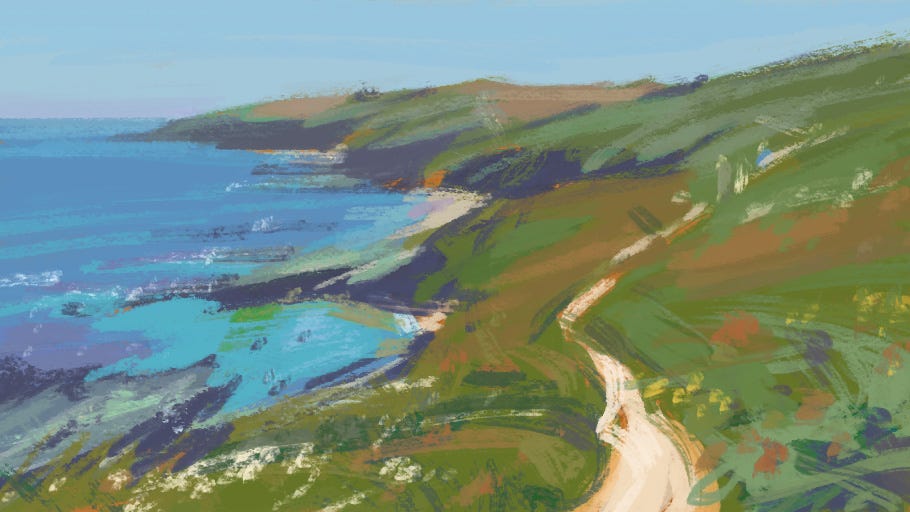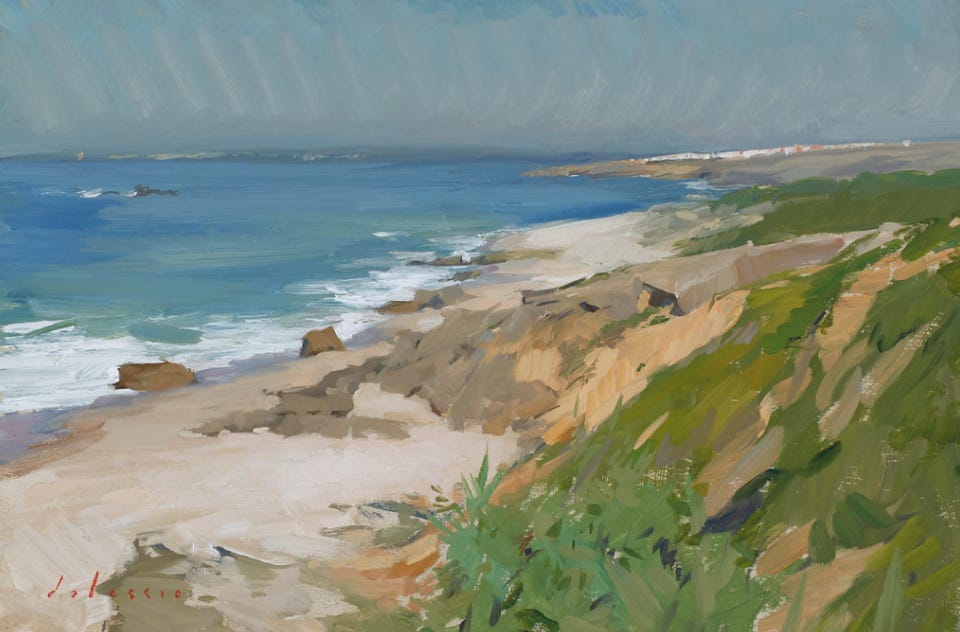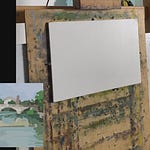Dear Subscribers,
Here is a recording of another digital sketch I created from photographic reference, but this time with the added benefit of studying relevant master works.
The tradition of making master copies dates back at least to the Renaissance. One of the key reasons this is valuable for a painting student is to observe how a skilled artist tackled a similar subject to the one being created, in this case, from a photo reference. I chose three artists who are experienced plein air painters and who I consider to be ‘honest.’ By ‘honest,’ I mean they don't distort or invent what they see when painting from life. Some artists, despite looking at their subject, do so only superficially, failing to truly capture it in terms of drawing, value, or colour. Instead, they invent or embellish, justifying it as artistic expression or imagination. While that’s a valid approach, capturing the truth of nature requires keen observation, mental sharpness, and the application of skills hard-won through hours of painting directly from life.
The three artists who I chose as ‘honest’ painters of nature were Marc Delassio (www.marcdalessio.com), David Curtis (www.djcurtis.co.uk) and Richard Musgrave Evans (richardmusgraveevans.com.au). By the way if you enjoy Marc’s paintings and want to see more he has created a Flikr photostream with many high quality photos of his plein air work.
Though all three artists are painters of truth, each has a distinct individual style. This illustrates that truth can be conveyed in various ways, yet remain authentic. Maintaining high standards of practice doesn’t stifle imagination—in fact, it enhances the artist’s ability to express themselves more effectively, bolstered by the truthfulness of nature.
A question might arise from the earlier discussion on truthfulness in painting: why am I using photo reference, which is inherently limited in capturing reality? Shouldn't I be painting from life, or at least working from a sketch made in situ? Ideally, yes—painting directly from life offers a more truthful connection to the subject. However, in this case, I don’t have access to the ‘live subject,’ so I’m making the best of a less-than-ideal starting point. Despite its many drawbacks, photo reference has some advantages: the lighting remains consistent, and I don’t have to contend with changing weather conditions or other disruptions.
I found this Eric Rhoads interview with Marc where he specifically talks about using photo reference.
Below is the photo reference I used, followed by the completed digital sketch, along with Marc’s master work, which I referred to as additional guidance.
The next live class will be on Saturday, 28th September, starting at 5pm BST (9am PDT / 12pm EDT).
The sessions typically run for 2-3 hours. You’ll find the Zoom login details below, and feel free to join or leave at any time. If you can’t attend or miss part of the session, don’t worry—I’ll be recording it and sharing the link via my newsletter afterward.
For this class, I’m open to requests, so let me know in the comments if there’s a particular subject or aspect of the painting process you’d like me to cover. You’re also welcome to paint alongside me during the session and share what you’re working on if you wish. The classes are informal and a great opportunity to discuss any aspect of painting that interests you.
I hope you find the recording valuable and look forward to seeing you in a future class!
Happy painting,
Alex















